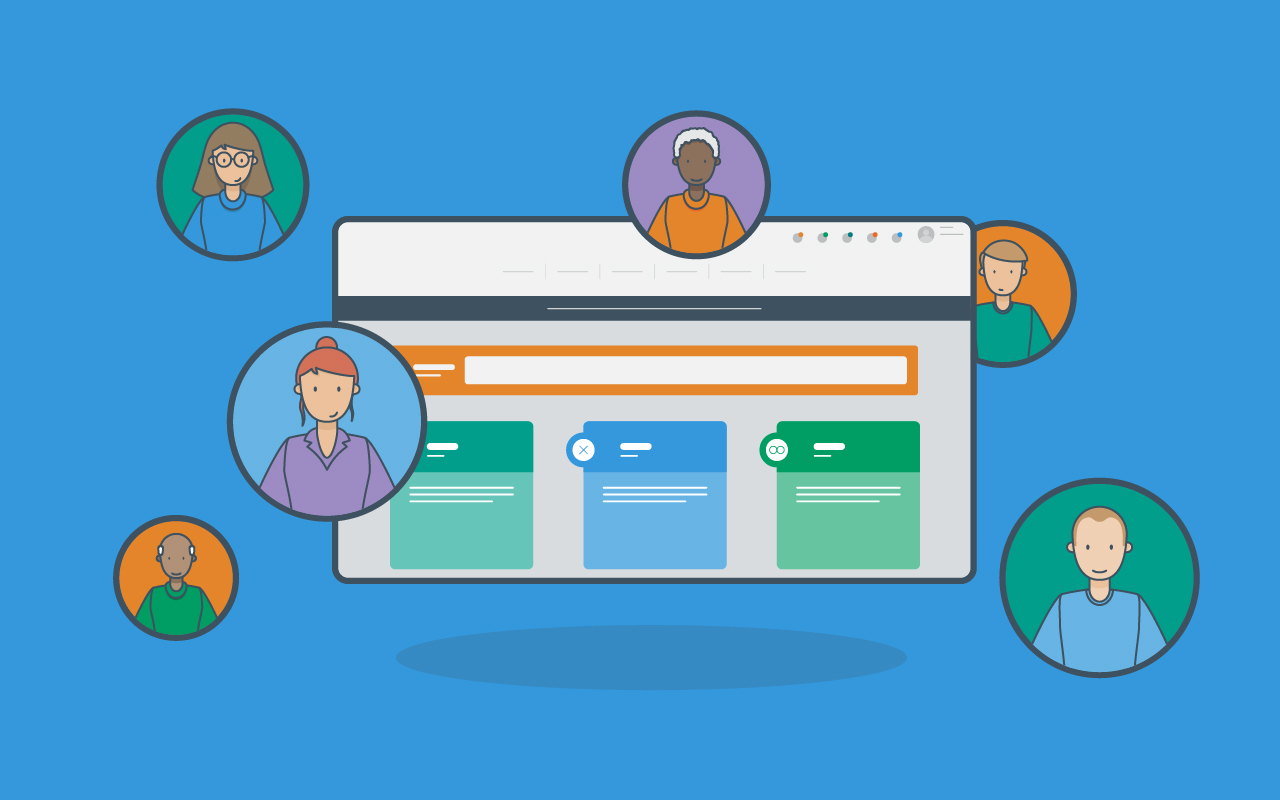Automation has a bad reputation for being devoid of humanity. But automation is not devoid of human intentions and actions, rather, it can positively augment human support agents in a variety of environments. For example, automation can help shorten onboarding time, create guided workflows, reduce costs by up to 50%, and increase productivity by 30% — not to mention the improvements it makes to the agent experience as a whole.
However, the benefits of automation can only be gained when it has been implemented with specific users and processes in mind. In other words, automation is not one-size-fits-all. In order to start any automation project, you first must know your customer and their needs fully, which can be achieved by defining the customer journey.
Types of ITSM Automation
Automation in regard to ITSM comes in many forms, and sometimes is referred to as AITSM.
Defined by Gartner and covered in detail in our recent post, “AITSM is not an acronym; rather, it is an initialism. It is a concept that refers to the application of context, advice, actions and interfaces of AI, automation and big data on ITSM tools and optimized practices to improve the overall effectiveness, efficiency and error reduction for I&O staff.” 1
ITSM automation can include automated workflows, IT asset management automation, automated ticket routing and management, change and release management automation, and more. These can be optimized and accessed further using artificial intelligence (AI) technology with Machine Learning (ML) and Natural Language Processing (NLP). These can be part of a self-service portal and can function to meet the needs of both the agents and their customers.
3 Reasons to Define the Customer Journey Before Implementing Automation
Before you can begin to plan any automation project, there are a few important reasons to identify the customer journey, listed below.
Reason 1: Defining the Customer Journey Creates Focused Outcomes
Mapping out the customer journey helps the service desk understand which types of automation should be implemented by focusing on creating specific outcomes. This leads to less wasted time automating areas which don’t actually need to be automated, because the needs of the customer act as the guiding light. But, these highly focused outcomes can only happen when strategic planning is involved.
Reason 2: Identifying the Customer Journey Enables Outside-In Thinking
Similar to the creation of focused outcomes, in defining the customer journey you can begin outside-in thinking. Understanding the customer journey enables you to think like the customer and create the automations that they will use, starting from their endpoint and working backward. This is called outside-in thinking – starting at the pain points and touch points of the customer and working your way in during the development stages. Outside-in thinking can lead to better productivity, less time wasted during development, and easier use of the end-product.
Reason 3: The Customer Journey Will Help Guide You Where to Start
At the core, the customer journey will be used to guide automated workflows and “if/then” scenarios. In defining the customer journey, you are also able to see which types of automation would actually be useful, what information can be automated via workflows, and where you can see automation already at work in some degree.
3 Steps to Define the Customer Journey and Optimize Automation
We already know that delivering exceptional automation requires a well-oiled machine in which all the parts are aligned and working together to create a great customer experience for external customers and internal employees.
But where do you start when it comes to mapping the customer journey? There are 3 simple steps you can take.
Step 1: Create a Variety of Customer Personas
Mapping a customer journey all starts with closely examining the experience from a client’s or customer’s perspective. To start, create a fictional person but make them as real as possible by answering the following questions:
- Who are you supporting?
- What is their preferred way of interacting with you (phone, email, chat, in-person)?
- What are their pain points?
- What problem are you solving for them?
- What are their main goals and motivators?
You can gather these answers by using data you already have out of your cloud-based service management software, or by simply talking to your clients, service desk agents, or anyone else who has regular interactions with them. Document these personas and consider creating a few different variations to address unique customer needs based on their day-to-day actions.
Remember, for every persona you will need to create a customized customer journey to live up to their expectations, so don’t overdo it on how many personas you will need to create.
Step 2: Create a Journey Map for Each Customer Persona Created in Step 1
After the personas have been created, you can move to the next step which is to map all touch points, pain points, and information each persona will need to access. This can be a highly visual map or something that is written out, but it should be clear to understand for anyone who will work on implementing automation.
Creating a customer journey is not as simple or as linear of a process as it may have been in the past. Rather, it is a more circular journey because customers are more empowered, have alternatives to solve their issues, and have access to knowledge they may not have had in prior years.
Start by using the data that you collected when creating the personas. Map out all the interactions and touchpoints the employee has with the service desk. Look at things like what actions they take, what channels they use to communicate with you, and their pain points. Take it one step further and analyze the emotion of the customer at every touchpoint; this will help you identify which parts of the customer journey they find stressful so that you can pinpoint where to alleviate the tension with automation efforts.
You should also consider in this step where they might find help if the service desk does not provide the right information. This can be helpful when thinking of which types of automation your customer might appreciate – for example, if your customer is more likely to Google an answer than ask for help, creating an automated search protocol may be helpful.
Step 3: Identify Gaps and Areas Where Automation Can Easily be Implemented
After creating personas and mapping their interactions with the service desk, you can identify areas where automation is already in place, areas where it can be implemented, and gaps that exist. This is an important step because implementing automation can be a cumbersome task, and if you already have areas that can be easily automated to start it can take some of the pressure off of your team quickly as you strategize on next steps.
For example, imagine that you have created your customer personas and mapped their journeys, and through this process you come to realize that many of your customers are reaching out via email for answers to simple questions. This presents a gap where knowledge management could be implemented through a chatbot or triggered workflow. This type of automation might already be in place for your agents and should be fairly easy to implement for customers.
Journey Mapping Creates a Customer-Centric Mindset
Customer-centricity means putting the customer at the core of your efforts, including automation. When you put in the effort of understanding who your customers are, creating their personas, and mapping their journeys, you are essentially shifting the mindset of the service desk to become more customer centric. Earlier, I mentioned outside-in thinking, and this is similar to customer-centricity because it forces developers and service desk agents to think of the end-goals of each user. Keeping customers at the core of your automation projects will help ensure that your efforts are not wasted and will ultimately help keep your service desk headed in the right direction.
To learn how EasyVista can help you create a customer-centric service desk with intelligent automation, request a demo today!
1 Gartner, Leverage 4 Domains of AITSM to Evolve ITSM Tools and Practices, Chris Matchett, 21 September 2020
2025 Gartner®Market Guide for ITSM Platforms
Get the latest ITSM insights! Explore AI, automation, workflows, and more—plus expert vendor analysis to meet your business goals. Download the report now!



